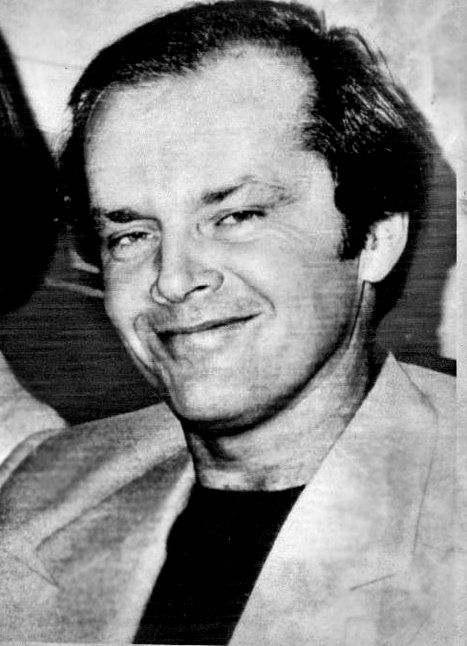Publication
Article
Psychiatric Times
We Are Still Flying Over the Cuckoo’s Nest
Author(s):
More than 50 years have passed since One Flew Over the Cuckoo’s Nest was published, and almost 40 years since the movie was released, but the issues seem as relevant today as they were back then. If you haven’t seen the film or have forgotten what you saw, see it again as soon as you can. Here's why.
Photo courtesy of Wikimedia

“One flies east, one flies west, and one flies over the cuckoo’s nest”
-From a nursery rhyme
At the recent annual meeting of the American Psychiatric Association, I had the opportunity to be on a panel to discuss a screening of One Flew Over the Cuckoo’s Nest. By many criteria, it was one of the three best movies of all time. The panel was pulled together by Lawrence Richards, MD; the other panelists were Roger Peele, MD, and Michael Schwarz, MD. The movie was shown at 9 AM-an ungodly time to watch a movie; nevertheless, it was very well attended. My role was to discuss community psychiatry, and in this regard the film proved to be provocative . . . I stayed over an hour afterwards to discuss the reactions with the audience.
What I hadn’t anticipated, having not seen the movie for almost 40 years, was how eerily well it paralleled my career and the evolution and devolution of community psychiatry. Not only that, but the movie was screened on my birthday.
Our abbreviated history
The book One Flew Over the Cuckoo’s Nest, written by Ken Kesey, who had worked in a VA hospital, was published in 1962. In that year, I was a 16-year-old, fascinated with Freud’s The Interpretation of Dreams and deciding to become a psychiatrist.
In 1963 - 1964, a play based on the book had a successful run on Broadway. Both the book and the play portrayed a repressive, overcrowded psychiatric hospital. Whether President Kennedy was familiar with either the book or play is unclear, but he pushed through the landmark Community Mental Health Act in 1963, paving the way for the deinstitutionalization of the state hospitals like the one portrayed by Kesey. In 1966, my soon-to-be wife and I spent some psychology class time at a state hospital in Michigan-one even worse than that depicted in the book and movie.
The film wasn’t made until 1975, the same year I started my psychiatric career at a community mental health center at an army base in rural Alabama. In many respects, this was the heyday of community mental health-there were hundreds of federally funded centers across the US, well on their way to providing comprehensive services in the communities instead of in the state hospitals. By 1981, President Reagan, began the dismantling of these centers by substituting block grants, whereby states could use these funds for other public services, such as highways.
Around 1988, two different societal trends affecting psychiatry gained traction in the US: the recovery movement and managed care, emphasizing consumer empowerment and management control of treatment, respectively. It was then that I became a director of an academic, not-for-profit managed care system. The experience of trying to reconcile and resolve those movements ethically led to the book The Ethical Way: Challenges and Solutions for Managed Behavioral Healthcare (Jossey-Bass, 1997).
By the 21st century, more and more patients were ending up in jails or prisons. Earlier, those same patients might have been hospitalized. From 2008 to 2012, I worked part-time in a medium-security prison in Wisconsin. To my surprise, because of federal funds from lawsuits (ie, federal suits that required Wisconsin prisons to provide treatment for inmates equivalent to that offered in the community)-I had more resources and time to help patients than I did in the public outpatient clinic in Milwaukee.
More than 50 years since One Flew Over the Cuckoo’s Nest was published and almost 40 years since the movie was released, the issues seem as relevant today as they were back then.
The Recovery Movement
For his portrayal of R. P. McMurphy in the film, Jack Nicholson won his first academy award. He instigated the inmates to obtain more rights and empowerment. For the screening, I wore a T-shirt of McMurphy with the saying, “what would McMurphy do?”-both to get into the mood of the movie and because I have been called an instigator too.
In combating the authority of the staff (whether that authority was well-meaning or malicious), the results turned out to be mixed: a patient suicide, violence to the staff, and a mercy killing after McMurphy’s lobotomy. There was also the awakening of some other patients, especially the Native American “Chief.”
Today we face a similar ethical challenge. To what extent should patients and consumers manage their treatment versus following the expertise of clinicians? At its extreme, we have anti-psychiatrists who desire the end of psychiatry. At its best, we have therapeutic alliances.
Prison and cultural psychiatry
Incarceration is obviously coercive: it’s a place where the recovery movement has little impact. In the movie, McMurphy gets himself out of prison and into what he erroneously thinks will be the more benign state hospital. Nowadays, the flow is in the other direction. There seem to be 10 times as many inmates with serious mental illness in jail than patients in state psychiatric hospitals.
In the book, movie, and real life, psychiatric care for black Americans was either absent or minimal at that time. Black Americans now have access to the limited public hospital beds available, but inadequate and often not culturally competent outpatient services. Correspondingly, we have the over-representation of young black men in prison.
The situation may be even worse for Native Americans. Here are some facts from the 2010 Fact Sheet published by the American Psychiatric Association on Mental Health Disparities: American Indians and Alaska Natives.
• About a third live on reservations
• The rate of violent victimization among these groups is twice that of black Americans
• The prevalence of PTSD among these groups is twice that of the general population
• They die of alcohol-related causes 6 times more often than the national average
• Although the suicide rate is high, living on reservations with strong tribal spiritual orientation has helped mitigate the suicide risk
Perhaps these grim facts help explain why the ending of One Flew Over the Cuckoo’s Nest seems so uplifting to many. The Chief escapes. However, where is he going and what kind of outpatient services will be available to him?
Electroconvulsive and related treatments
The traumatic depiction of ECT in the movie, used as much for control as treatment, had a major impact on the subsequent lack of availability of ECT, despite the development of much safer delivery systems and its potential for lifesaving quick benefits. Many feel that the development and use of other related treatments, such as transmagnetic stimulation, vagal nerve stimulation, and surgical deep brain stimulation, have been slowed by their association with ECT. Meanwhile, we continue to learn more about the long-term adverse effects of various medications, and many psychotherapies are becoming less available.
Leadership and the role of psychiatrists
In the movie, the power and authority seem to reside with the nurse(s) rather than the psychiatrists. With the loss of hospital beds and the availability of only brief stays, it is unclear where the leadership now resides.
In the beginning of community mental health centers, psychiatrists were often the top authority. They gradually left because of competition from other disciplines and reduced resources. Currently, in most systems, either social workers and/or business-trained professionals are the CEOs and, at best, psychiatrists are medical directors.
The meaning of the Cuckoo’s Nest
Ever since seeing the movie, I was fascinated by the title. Why was the excerpt from a nursery rhyme highlighted? Cuckoo is slang for crazy, which, in turn, is slang for the mentally ill. One goes one way, one goes in the opposite direction, one flies over the nest, but the implication is that whoever is in the cuckoo’s nest is not nourished. Is the lack of nourishment of the mentally ill by would-be helpers going off in all directions but not integrating for what is needed what Kesey wanted to convey to us?
Recommendations
One of the reasons for the movie’s widespread popularity is that it can be viewed as a metaphor for the struggle of resistance against unhelpful authority-surely a theme of the 60s era. This was likely an important theme for the director, Milos Forman, whose parents were killed in Nazi concentration camps when he was a boy. Unhelpful authority in psychiatry today can include for-profit managed care devoted more to profits than to patient care, paternalistic clinicians who don’t listen enough to their patients, and politicians who have passed laws leading to increased incarcerations of the mentally ill. These situations need to be addressed by all who want to help the mentally ill, although in a more effective way than McMurphy used. Those who passively and quietly go along with such authority enable it to persist.
Unfortunately, the 13-year lag between the book and the movie put it well behind the inpatient environment it portrayed, leaving many psychiatrists to feel that it was the most damaging of any movie ever to the field of psychiatry. Nevertheless, while it was behind the times as far as hospitalizations, it was also ahead of its time in its consideration of other important issues. Given that, the movie should be shown periodically at conferences and in the residency training of all psychiatrists.
If you haven’t seen the film or have forgotten what you saw, see it again as soon as you can.
This article was originally posted on 5/21/2014 and has since been updated.






